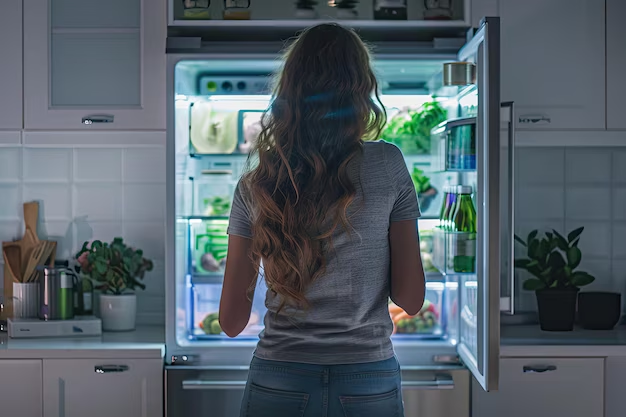Keeping Your Cool: How Long Can Food Last Without Power in the Fridge?
Imagine this: a summer storm rolls in, the winds pick up, and suddenly, your power flickers out. As you light candles or grab your flashlight, another thought crosses your mind — what about all the food in your refrigerator? Understanding how long food can safely stay in a fridge without electricity is essential, especially during power outages. In this guide, we'll explore the factors influencing the shelf life of refrigerated foods when power cuts happen and provide you with practical tips to navigate these situations confidently.
⏲️ Understanding How Long Food Keeps Cold
Factors Affecting Refrigeration Without Power
When the electricity goes out, several factors determine how long your fridge stays sufficiently cold:
- Temperature Prior to Outage: Ideally, your fridge should have been at or below 40°F to ensure the longest preservation time.
- Duration of Outage: The longer the power is off, the more the internal temperature will rise.
- Fridge Contents: A full fridge retains cold better than an empty one, as the contents help maintain low temperatures.
- Frequency of Door Opening: Every time the door is opened, warm air enters, accelerating temperature increase.
Typical Safe Timeframes for Food
It's generally accepted that food can remain safe for up to 4 hours in a refrigerator without power, provided the door remains closed. After this period, the internal temperature may start to rise beyond safe limits, which introduces the risk of foodborne pathogens.
Key Tip: Use a refrigerator thermometer to monitor the exact temperature inside the fridge to make an informed decision.
🥶 Preserving Food During Power Outages
Immediate Steps to Take
When faced with a power outage, follow these immediate steps to maximize the safety and longevity of your food:
- Keep Doors Closed: Limit opening the fridge and freezer doors to retain cold air and slow down temperature rise.
- Utilize Ice Packs: If available, place ice bags or ice packs inside to absorb and distribute cold air more evenly.
- Consolidate Items: Collect all perishable items together; this mass helps them stay colder longer.
- Monitor Temperature: Aim to keep the fridge below 40°F and the freezer at 0°F for safety.
Freezer Considerations
The freezer can keep temperatures safe for longer periods than a refrigerator, often up to 48 hours if full and the door is not opened. This longer duration, however, still varies based on similar factors affecting the fridge.
🚫 Knowing When to Discard Food
Signs Food Has Gone Bad
Identifying whether food has become unsafe is crucial. Here’s what to watch out for:
- Temperature Above 40°F: Once internal fridge temperatures rise beyond this point, bacteria can proliferate rapidly in certain foods.
- Odd Smells or Colors: Foods exhibiting strange odors or discoloration should not be consumed.
- Texture Changes: A mushy texture in items like vegetables can indicate spoilage.
Foods Most at Risk
Certain foods are more sensitive to temperature changes and should be checked first:
- Dairy: Milk, cheese, and yogurts spoil quickly.
- Meat, Poultry & Seafood: These should be discarded if warmer than 40°F for more than two hours.
- Egg-based Products: Include mayo, egg salad, or custards.
- Leftovers and Cooked Foods: These commonly harbor bacteria if kept at unsafe temperatures.
Foods That May Fare Better
Some foods remain safe beyond the 4-hour mark in higher temperatures:
- Condiments: Such as ketchup, mustard, and pickles are generally safe longer.
- Hard Cheeses: These can handle warmer temperatures for a short period.
- Fruits and Vegetables: Whole rather than sliced versions have a longer shelf life outside refrigeration.
💡 Proactive Strategies for Future Outages
Preparing Your Kitchen
- Stock Up on Shelf-Stable Foods: Dry goods, canned products, and ready-to-eat meals ensure you have provisions that don't rely on refrigeration.
- Frozen Water Bottles: Keeping bottles of water frozen in your freezer allows for double duty — chilling your perishables and providing drinking water as they thaw.
- Invest in a Generator: If prone to frequent outages, a backup generator can be invaluable in preventing food from spoiling.
Use Technology to Your Advantage
- Temperature Alarms: These devices alert you when the fridge exceeds safe temperatures, giving you time to adjust accordingly.
- Smart Thermometers: Connect these to your smartphone for real-time updates on fridge conditions, even during outages.
🛠️ Visual Guide: Quick Reference for Safe Food Handling During Outages
Here's a handy bullet-point summary with emojis for quick reference:
- 🔒 Keep Doors Closed: Preserve cold temperature for as long as possible by minimizing openings.
- 🧊 Use Ice and Ice Packs: Boost cooling capacity quickly.
- 🌡️ Monitor Temperature: Aim to keep inside below 40°F; discard if warmer for 2+ hours.
- ❌ Check Perishables: Dairy, meats, and leftovers need priority checks for spoilage.
- 🥫 Leverage Non-Perishables: Have a backup plan with shelf-stable foods.
- 💡 Electricity Backup: Consider a generator or portable battery for major outages.
- 📱 Smart Monitoring Tools: Utilize technology to manage fridge conditions proactively.
🌟 Navigating the Aftermath and Safety Assurance
Once power returns, it's essential to reassess your fridge’s contents and ensure everything is still safe to consume. Remove any foods that seem risky based on the guidelines above. For future peace of mind, keep a checklist of these tips on hand, and implement proactive measures to minimize inconvenience and food waste during power interruptions.
In our ever-evolving world where unexpected events can happen, staying informed and prepared ensures that you can handle these challenges with confidence. Remember, knowing how long food can stay in your refrigerator without power and having a plan in place makes all the difference.
